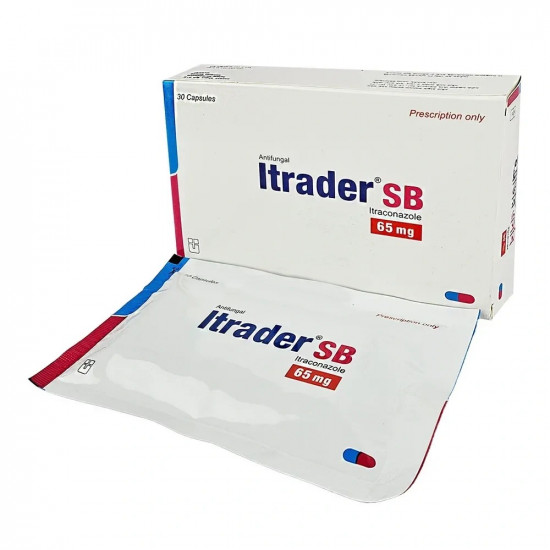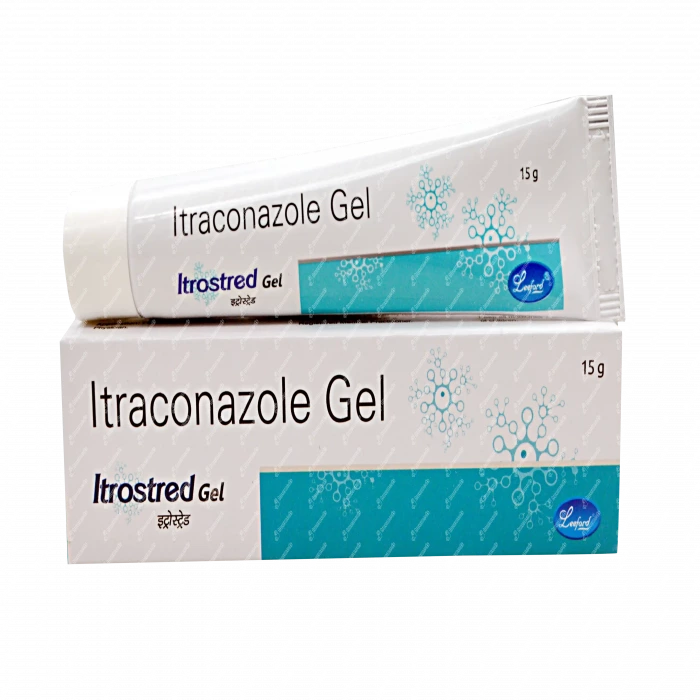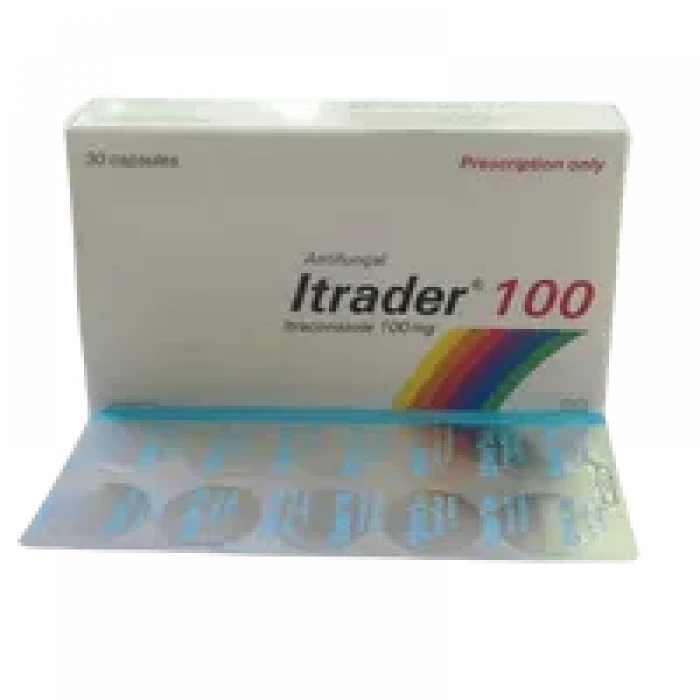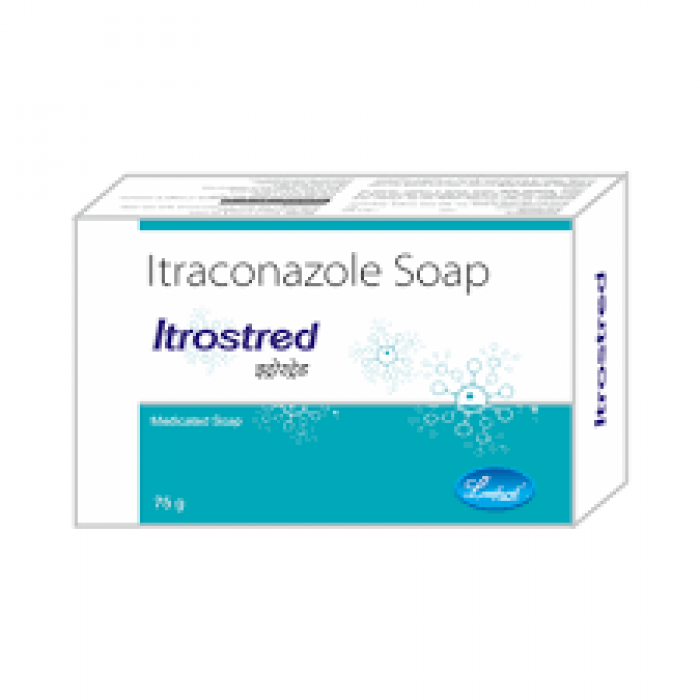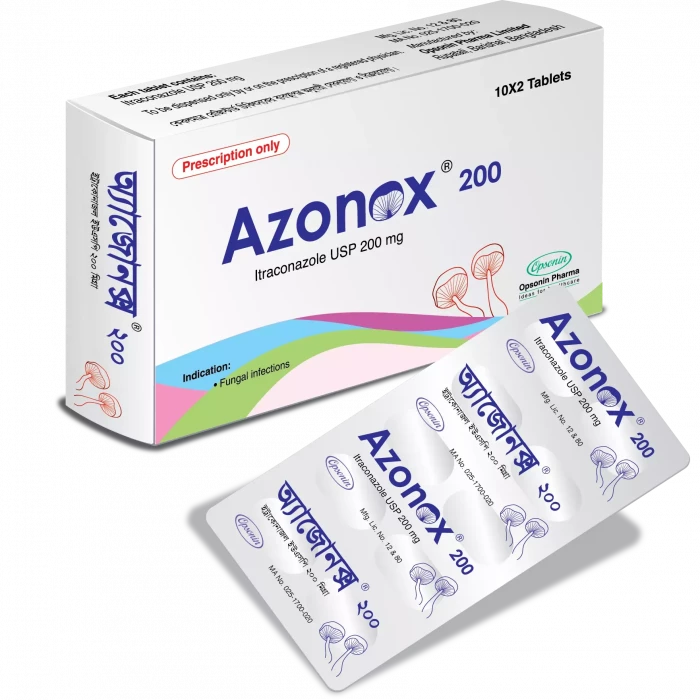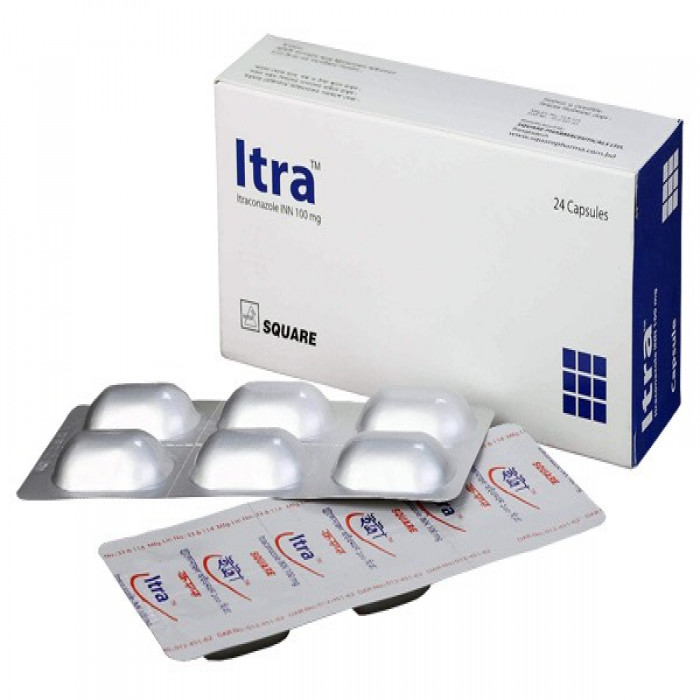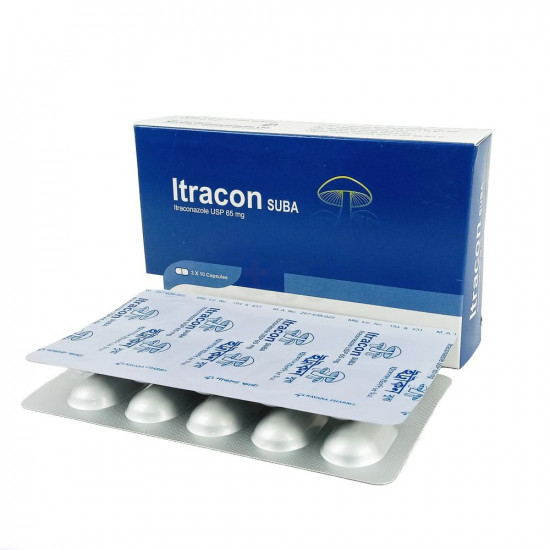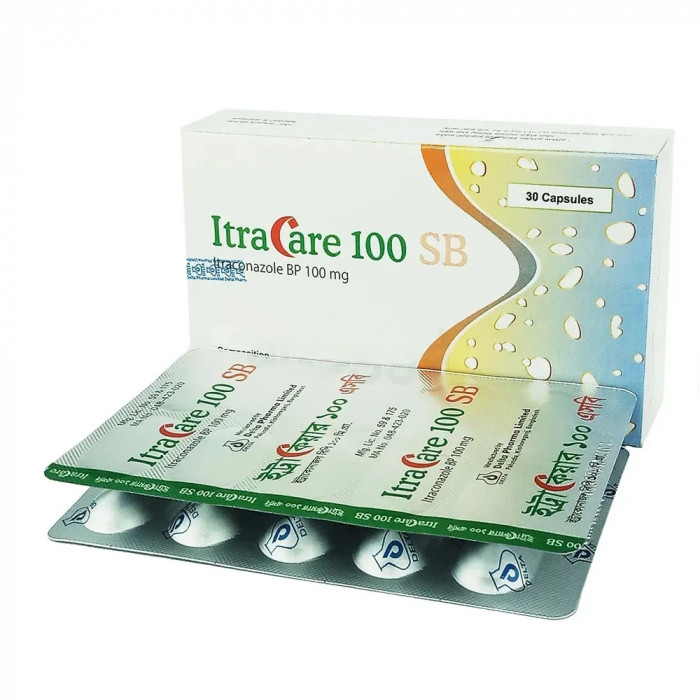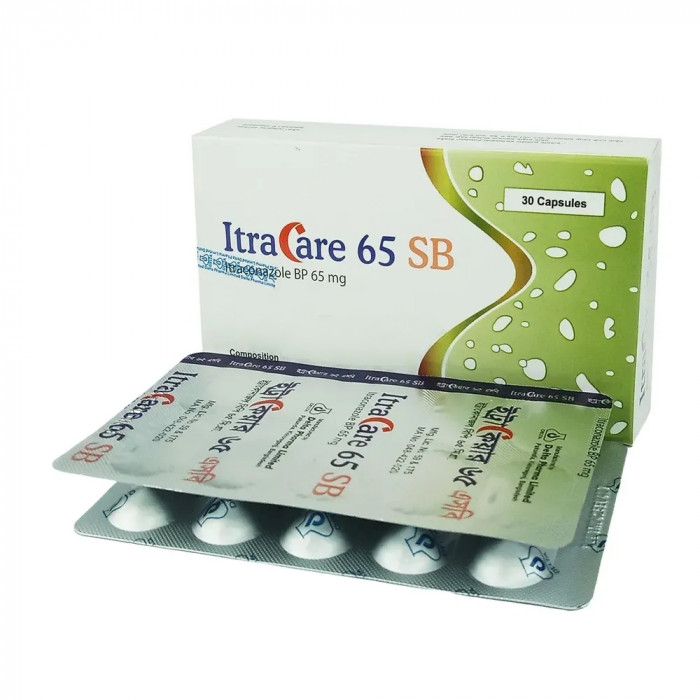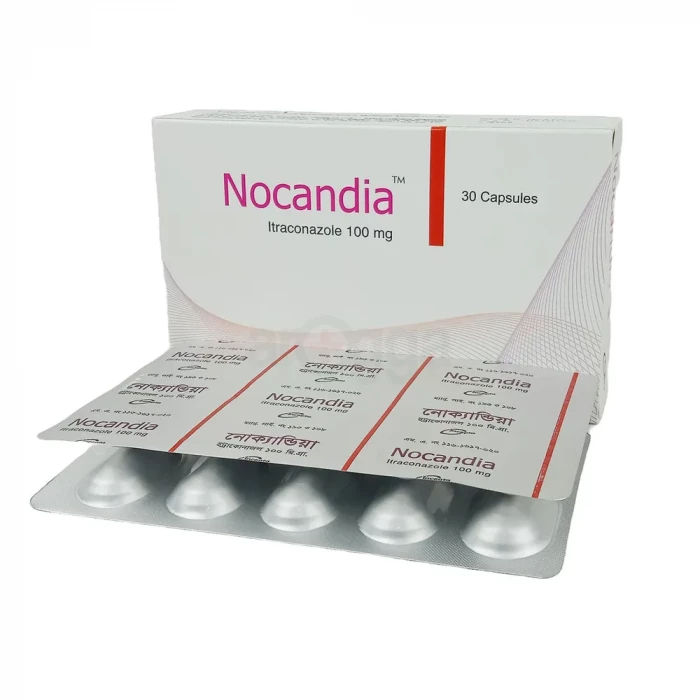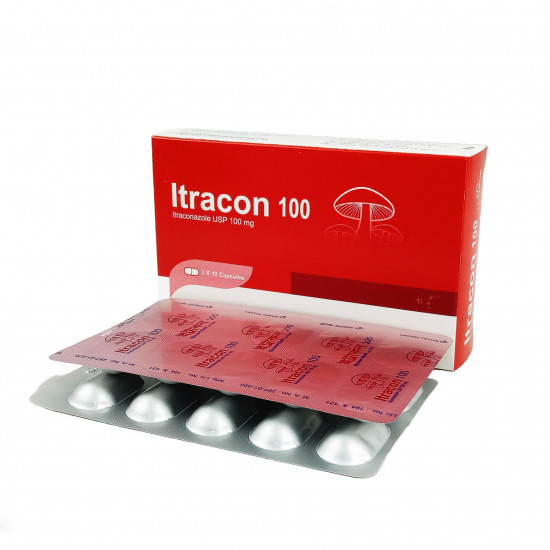
✔ 100% Authentic Product
👁️ Currently Viewing 2650
Itracon 100 | 1 Strip
Fungal infections occur when fungi invade tissues, causing symptoms such as itching, redness, scaling, swelling, or blisters.
- Yeast infections (Candida): Often occur in moist areas (mouth, vagina, groin, armpits).
- Oral thrush: Overgrowth of Candida in the mouth.
- Nail infections: Lead to thick, brittle, or discolored nails.
While some fungal infections are contagious, others—like vaginal yeast infections—are not.
Itraconazole is a broad-spectrum antifungal that stops fungi from growing and spreading by disrupting their cell membranes.

100% Genuine Products, Guaranteed
Safe & Secure Payments, Always
Fast, Secure & Efficient Delivery
Proper Packaging
 Cash on Delivery - All over Bangladesh
Cash on Delivery - All over Bangladesh Regular Delivery - 12-24 Hours, Dhaka City*
Regular Delivery - 12-24 Hours, Dhaka City* Regular Delivery - 24-48 Hours, All Over Bangladesh*
Regular Delivery - 24-48 Hours, All Over Bangladesh* ফ্রি ডেলিভারিঃ - ৯৯৯ টাকা+ অর্ডারে, ঢাকা
শহরে
ফ্রি ডেলিভারিঃ - ৯৯৯ টাকা+ অর্ডারে, ঢাকা
শহরে ফ্রি ডেলিভারিঃ - ২৯৯৯ টাকা+ অর্ডারে, ঢাকার
বাহিরে
ফ্রি ডেলিভারিঃ - ২৯৯৯ টাকা+ অর্ডারে, ঢাকার
বাহিরে
✅ Description:
Itraconazole is an antifungal medication prescribed to treat a wide range of fungal infections affecting the mouth, throat, fingernails, toenails, and lungs. Fungal infections occur when fungi invade tissues, and some types can spread from person to person.
This medicine works by blocking the production of ergosterol, an essential component of fungal cell membranes. Without ergosterol, the fungal cell walls become weak, leading to leakage of cell contents and ultimately the death of the fungi.
- Keep skin clean and dry; avoid tight or sweaty footwear.
- Do not share personal items (towels, socks, shoes, combs).
- Wash bedsheets and clothing regularly.
- Avoid scratching infected areas to prevent spreading.
- Wear footwear in communal showers or changing rooms.
- Liver function tests may be required before and during treatment.
- Regular monitoring is important for patients on long-term therapy
✔️ Benefits: Itracon 100
Provides broad antifungal coverage for oral, nail, skin, and lung infections.
Weakens and damages fungal cell membranes by preventing ergosterol formation.
Ensures effective clearance of fungal infections and prevents recurrence when used appropriately.
✔️ Itraconazole is indicated for the treatment and prevention of fungal infections, such as:
Yeast infections (Candida): Effective against vaginal candidiasis.
Systemic fungal diseases: Used in patients with weakened immunity to control deep fungal infections.
Prophylaxis: Sometimes prescribed to prevent fungal infections in patients undergoing chemotherapy or with immune deficiencies.
Oral candidiasis (Thrush): Manages fungal overgrowth in the mouth caused by Candida.
✔️ Possible Side Effects: Itracon 100
- Most side effects are mild and temporary, but medical attention may be required if they persist.
- Common: Nausea, diarrhea, headache, fatigue, stomach pain, cough, cold, sore throat, and back pain.
- Serious: Signs of liver problems (yellowing of eyes/skin, dark urine, pale stools, severe stomach pain).
✔️ Directions for Use: Itracon 100
- Take with food to enhance absorption and reduce stomach irritation.
- Swallow whole with a glass of water; do not crush or chew.
- Follow the prescribed dose and duration exactly as directed by your physician.
✔️ Interaction
Itraconazole interacts with several medicines:
- Acid-reducing agents: Esomeprazole, omeprazole, pantoprazole.
- Corticosteroids: Fluticasone, budesonide.
- Opioids: Hydrocodone, fentanyl.
- Anticoagulants: Warfarin.
- Statins: Simvastatin.
- Antiallergics: Terfenadine.
- Anxiolytics: Alprazolam.
Food & substance interactions: Avoid grapefruit juice and marijuana, which may reduce effectiveness or worsen side effects.
✔️ Safety Information:
- Alcohol: Avoid—may increase risk of liver toxicity.
- Pregnancy: Unsafe (Category C)—may harm the unborn baby.
- Breastfeeding: Use only if benefits outweigh risks (passes into breast milk).
- Driving: May cause dizziness, blurred vision, or hearing problems—avoid driving if affected.
- Liver/Kidney disease: Use with caution under medical supervision.
- Children: Not recommended under 12 years unless prescribed by a specialist.
✔️ Precautions & Warnings
- Avoid if allergic to itraconazole.
- Contraindicated in heart failure due to risk of severe, life-threatening effects.
- Inform your doctor if you have liver, kidney, heart, or lung disease.
- Use in pregnancy and breastfeeding only if clearly recommended by a physician.
✔️ Storage:
Store below 25°C, in a cool & dry place. Keep away from light. Keep all the medicine out of the reach of children.
⚠️Disclaimer:
At ePharma, we’re committed to providing accurate and accessible health information. However, all content is intended for informational purposes only and should not replace medical advice from a qualified physician. Please consult your healthcare provider for personalized guidance. We aim to support, not substitute, the doctor-patient relationship.




